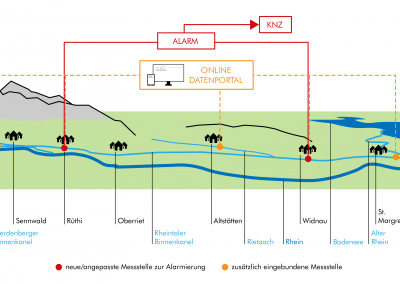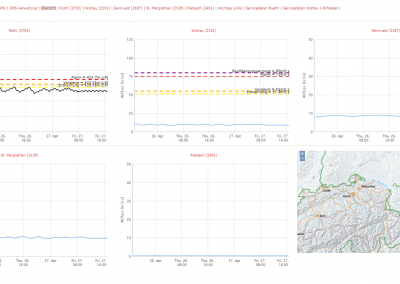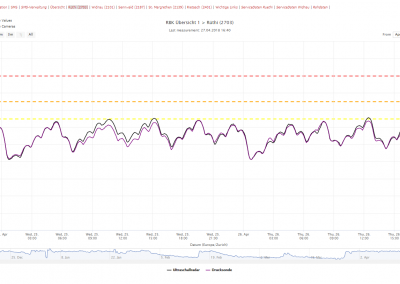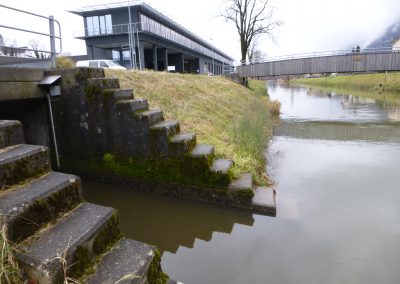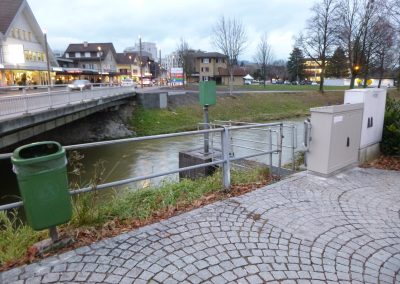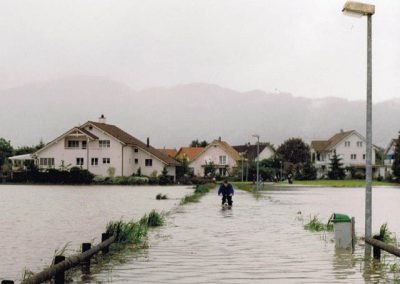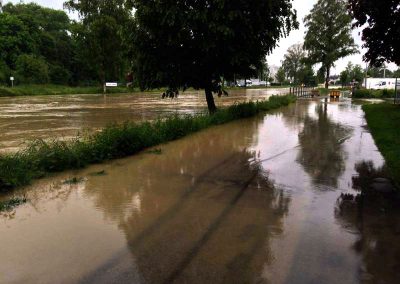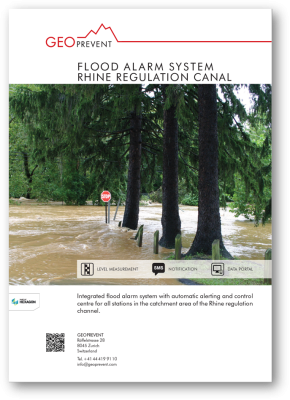Flood alarm system Rhine Regulation Canal
Challenge
The Rhine Regulation Canal (RBK) at the Swiss/Austrian border is a water system in the Rhine Valley plain to control Rhine tributaries. The 35 km long canal provides flood protection for the Rhine Valley, which was previously frequently flooded. After more than 100 years of operation, the canal has now reached its capacity limits as the floods of 1999 and 2013 have clearly shown. Today’s much higher population density, the building’s age and new, higher standards in flood protection demand adjustments to the important canal. In this context, emergency preparedness and response should also be improved, e.g. with a virtual situation centre. The aim is to create a uniform and real-time display of all discharge measurement points of the region for online access at any time. In addition, an automatic alarm is to be triggered when predefined discharge values are exceeded. Different types of alarm were desired depending on the alarm receiver.
Solution
Our online data portal offers the ideal platform for the desired “virtual situation centre” and the combined display of measurement, warning and alarm values. Authorized users can access all data at any time via PC or smartphone and obtain an overview of all measurement points.
The integrated measurement sites are those operated by the Rhine Regulation Canal themselves, the Federal Office for the Environment (FOEN), the Canton of St. Gallen (AFU) or St. Gallisch-Appenzellische Power Plants Ltd. The measurement stations with alarm functionality are Rüthi and Widnau (see figure below). The upgrade to an independent alarm system requires a one-time adaptation of the previously existing stations to ensure direct communication with the Cantonal operations centre. Since alarm systems demand a higher level of system availability, these two measurement sites additionally had to be designed redundantly, i.e. two different measurement sensors per station, a charge controller and a battery for reliable power supply in the event of a power failure as well as an integrated cabinet heating to ensure optimum operating conditions in the colder season.
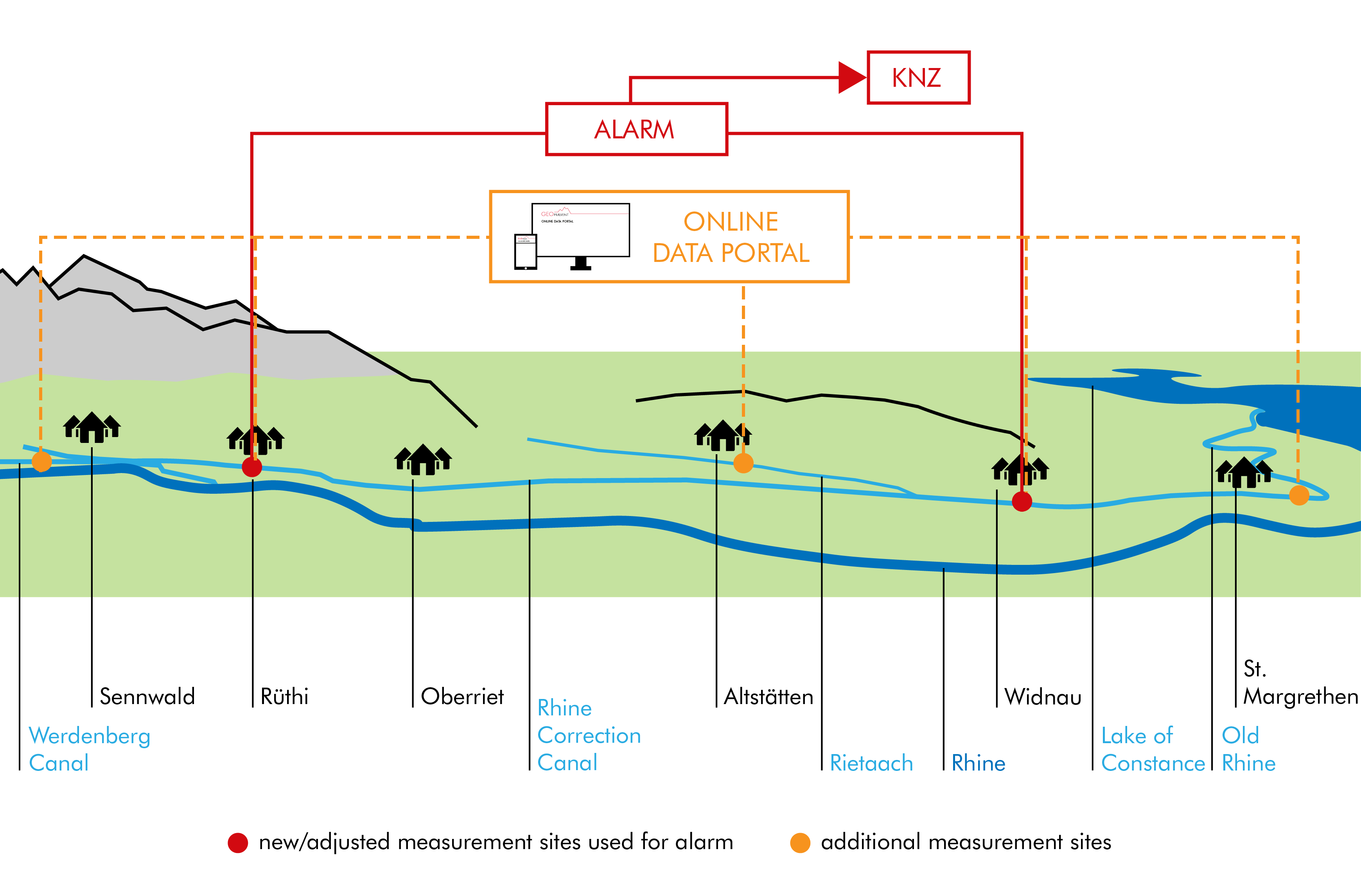
Appropriate warning and alarm values were defined for both measurement stations. Exceeding these thresholds triggers an alarm, which is immediately and redundantly (via mobile radio and DSL connection) transmitted to the cantonal operations centre. Alarm transmission is performed via TUS and Certas systems. The cantonal operations centre then forwards the alarm to the appropriate authorities (e.g. fire brigade). In addition, alarm SMS can be sent out automatically via the online data portal to a user-editable recipient lists.
During normal operation, the system records the measured data every 5 minutes, in case of an alarm every 2 seconds. Data transmission is performed periodically via mobile phone network to our servers (normally every 5 minutes, in case of an alarm every 2 minutes). Authorized users can view all data anytime via the online data portal. This allows remote monitoring of the situation in the canal and tributaries conveniently by PC or smartphone. The alarm triggers locally and communicates directly with to the Cantonal operations centre.
We further included data of other relevant measurement stations of the FOEN and the Canton of St. Gallen. These stations are also included in the overview display on the online data portal, but are not used for alerting purposes. This project was implemented in cooperation with our partners Egli Engineering and ES-Sicherheit AG.
More information
Overview map with the Rhine, several tributaries and the measurement sites of the Rhine Valley Plain.
Online data portal: Close-up of the measurement site Rüthi with time series of the ultrasonic sensor and the pressure probe. The wavy line is caused by canal regulation.
Measurement site at Rüthi: an ultrasonic sensor and a pressure probe measure the water level simultaneously but independently.
Measurement site Widnau: a gauge radar and a pressure probe measure the water level simultaneously but independently.
Customer



